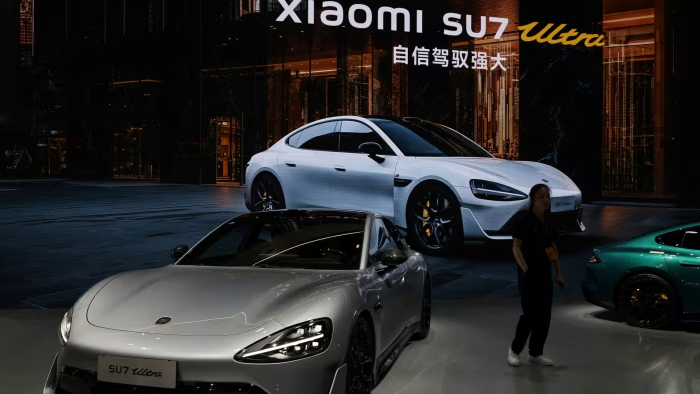Unlock the Editor’s Digest for free
Roula Khalaf, Editor of the FT, selects her favourite stories in this weekly newsletter.
People who buy expensive cars do so because they are keen on roaring engines, buttery-soft interiors and iconic logos. What doesn’t play into their purchasing decisions, apparently, is how environmentally friendly the vehicles are.
Responding to customer preferences, Ferrari said last week that it only expects 20 per cent of its models to be fully electric by 2030, down from 40 per cent previously. Porsche last month delayed a new range of high-end EVs, with chief executive Oliver Blume — who may be on the off ramp at the sports-car maker — citing a drop in demand for exclusive battery-electric cars. Mercedes has also seen weak EV sales, although third-quarter numbers improved.
That’s somewhat of a contrast to the mood in the broader EV market, which — amid ups and downs — sold a record 2.1mn vehicles in September. There are lots of reasons why luxury EVs are failing to get traction. One is that China is the biggest market in the world, accounting for 65 per cent of overall EVs sold last year. And in China, the cars that do a roaring trade tend to be cheap little runarounds. On top of that, consumers who do want the convenience of the high-end electric car have homegrown models to choose from: buffs reckon the Xiaomi SU7 is not entirely dissimilar to the Porsche Taycan, at a fraction of the price.
Price is also a factor in Europe, where luxury and premium EVs carry a relatively high premium compared to the equivalent internal combustion engine (ICE) model. Plus, the rapid pace at which EV technology is developing means that resale values are relatively low.
In the near term, sluggish demand for luxury EVs is only really a problem for western manufacturers who raced down that road. Porsche, for instance, has had to write down some of its investment. For those who have been keeping their options open, the slower than expected decline of the old technology means they can carry on selling the more profitable ICE cars for longer.
Still, it potentially stores up problems later on. For one thing, electrification may shrink the pool of customers that are willing to pay top dollar for a car: electric engines are less differentiated than the traditional kind, so manufacturers will have to figure out how to justify the extra expense via design and gizmos. And, for another, Chinese manufacturers are rapidly moving up the value chain. When the market for luxury EVs does ignite, western carmakers may find that rivals have raced ahead.
camilla.palladino@ft.com
